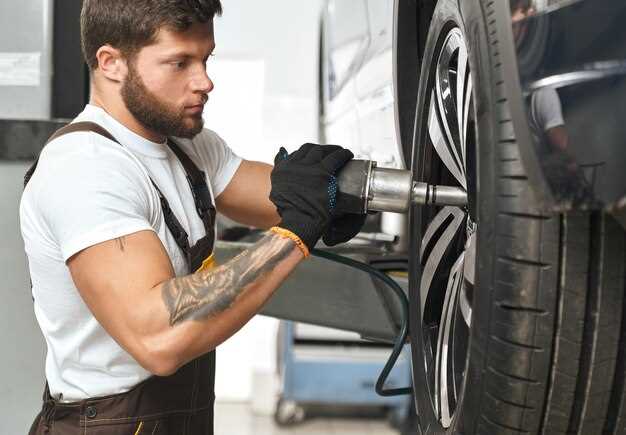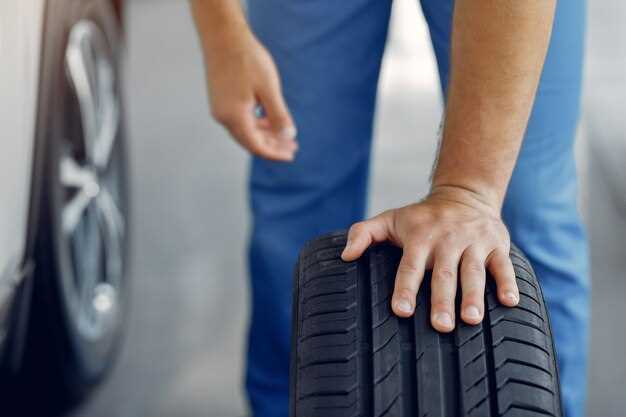
Maintaining proper tire pressure is crucial for the safety and performance of your vehicle. Inadequate pressure can lead to reduced fuel efficiency, uneven tire wear, and compromised handling, ultimately increasing the risk of tire blowouts. Many drivers overlook this essential maintenance step, which can be easily performed at home with minimal tools.
In this article, we will guide you through the process of checking and adjusting your tire pressure with precision, ensuring that your vehicle operates smoothly and safely. You will learn how to read your manufacturer’s recommended tire pressure, utilize essential tools, and understand the significance of seasonal changes on tire inflation.
By incorporating these simple practices into your regular vehicle maintenance routine, you can enhance your driving experience, improve fuel economy, and extend the life of your tires. Let’s dive into the steps that will enable you to check and adjust your tire pressure like a pro.
Select the Right Tools for Tire Pressure Check

To effectively check your tire pressure, having the right tools is essential. Here’s a breakdown of the necessary items you should consider:
-
Tire Pressure Gauge:
The most important tool for checking tire pressure. Choose a digital or analog gauge based on your preference. Digital gauges tend to be easier to read, while analog gauges are more durable.
-
Air Compressor:
If your tires are low on air, an air compressor is vital. Portable models are convenient for home use and can be stored in your vehicle for emergency situations.
-
Valve Stem Tool:
This tool helps to remove or replace valve cores. It’s beneficial if you need to make adjustments or repairs quickly.
-
Cleaning Supplies:
Keep your valve stems clean to ensure accurate readings. A small brush or a cloth can help remove dirt and debris.
-
Notebook or Smartphone App:
Record your tire pressures over time to identify any irregularities. Many smart devices offer apps designed to help you monitor tire health effectively.
With these tools at your disposal, you’ll be well-equipped to check and maintain the appropriate tire pressure like a pro.
Understand Your Vehicle’s Recommended Tire Pressure
Maintaining the correct tire pressure is essential for optimal vehicle performance, safety, and fuel efficiency. It is crucial to understand the recommended tire pressure specified by the vehicle manufacturer, as it directly impacts handling, tire wear, and overall driving comfort.
The recommended tire pressure can typically be found in several places on your vehicle. Check the driver’s side door jamb, the glove compartment, or the fuel filler cap for the manufacturer’s sticker that details the appropriate pressure levels for both front and rear tires.
It’s important to note that the recommended tire pressure is often given in pounds per square inch (PSI) and may differ based on load conditions. For example, if your vehicle is heavily loaded, you might need to adjust the pressure accordingly to ensure safe handling and performance.
Regularly checking your tire pressure is recommended at least once a month and before long trips. Always measure tire pressure when the tires are cold, as driving heats them up and can give inaccurate readings. To achieve precise measurements, invest in a reliable tire pressure gauge.
Maintaining proper tire pressure not only enhances safety but also contributes to better fuel economy and reduces tire wear. Under-inflated tires may lead to blowouts, while over-inflated tires can compromise grip and increase stopping distances. Understanding and following your vehicle’s recommended tire pressure is key to a safer and more efficient driving experience.
Identify How to Accurately Measure Tire Pressure
To accurately measure tire pressure, you need a reliable tire pressure gauge. Begin by ensuring that your vehicle has been sitting for at least three hours or has been driven less than a mile to provide an accurate reading, as tire pressure can increase with heat from driving.
Start by locating the tire valve stem, which is usually situated on the outer side of the tire. Remove the valve cap and set it aside in a safe place to avoid losing it. Quickly press the tire pressure gauge onto the valve stem. Ensure a firm, quick connection to prevent any air from escaping during the measurement.
Read the measurement displayed on the gauge. For digital gauges, the reading will appear on the screen, while analog gauges will have a pointer indicating pressure. Make a note of the reading, as tire pressure is typically measured in pounds per square inch (PSI).
Compare your measured pressure to the vehicle manufacturer’s recommended tire pressure, which is usually found on a label inside the driver’s door jamb or in the owner’s manual. If the measured pressure is significantly lower than recommended, add air until it reaches the appropriate level. Conversely, if it’s higher, release some air by pressing the center of the valve stem.
After adjusting the pressure, recheck with the gauge to ensure accuracy. Replace the valve cap firmly to prevent dirt and moisture from entering the valve. Regularly check tire pressure, ideally once a month or before long trips, as maintaining proper tire pressure enhances fuel efficiency, tire lifespan, and overall vehicle safety.
Learn the Best Time to Check and Adjust Tire Pressure
Checking and adjusting tire pressure is crucial for optimal vehicle performance, safety, and fuel efficiency. The best time to perform this task is when your tires are cold, which typically means checking them in the morning before driving or after the vehicle has been parked for several hours. Heat generated from driving can cause the air inside the tires to expand, leading to inaccurate pressure readings.
Additionally, it is advisable to check tire pressure at least once a month and before embarking on long trips. Sudden temperature fluctuations, especially with the changing seasons, can also affect tire pressure. For every 10°F drop in temperature, tire pressure can decrease by approximately 1 psi. Therefore, during colder months or regions, more frequent checks may be necessary.
Moreover, it’s essential to inspect tire pressure before and after periods of intense use, such as during vacations or road trips. Maintaining proper tire pressure enhances traction, handling, and extends the lifespan of your tires, contributing to safer driving conditions.
Explore Common Mistakes in Tire Pressure Management
Tire pressure management is crucial for ensuring safety, enhancing fuel efficiency, and prolonging tire life. However, many vehicle owners make common mistakes that can compromise these benefits. Understanding these pitfalls can help you maintain optimal tire pressure.
One prevalent error is overlooking the recommended tire pressure. Many drivers rely on personal judgment or tire appearance rather than checking the manufacturer’s specifications. Each vehicle has a specific pressure range, usually listed on the driver’s side door jamb or in the owner’s manual. Ignoring this information can lead to underinflated or overinflated tires, both of which create safety hazards.
Another mistake is failing to check tire pressure regularly. Tire pressure can fluctuate with changes in temperature, often decreasing in colder months. Neglecting to monitor pressure at least once a month can result in tires being dangerously low before any noticeable performance issues arise. Moreover, checking pressure only when tires appear flat can be misleading, as tires can look fine while still being under-inflated.
Some drivers often check tire pressure only when tires are cold. While it’s true that tire pressure increases with heat generated during driving, neglecting to check tires in the cold state can lead to incorrect readings. For the most accurate results, it is essential to check the pressure when tires have not been driven for several hours.
Additionally, many people fail to use a proper tire pressure gauge. Relying on unfamiliar or poorly calibrated gauges can lead to inaccurate readings. Investing in a quality digital or dial pressure gauge ensures more consistent and reliable results, enabling better tire maintenance.
Finally, overlooking the spare tire is a common error. Many drivers assume that since the spare isn’t used regularly, it doesn’t require maintenance. However, spare tires can lose pressure over time just like regular tires, making it critical to include them in your tire pressure checks.
By avoiding these common mistakes and making informed decisions about tire pressure management, you can significantly improve safety, performance, and the longevity of your tires.
Follow Up with Regular Maintenance for Longevity
To ensure the longevity of your tires and enhance vehicle performance, regular maintenance is essential. Tire health isn’t solely reliant on correct pressure; it also encompasses routine checks and proper care. Here are key practices to maintain tire longevity:
| Maintenance Task | Frequency | Description |
|---|---|---|
| Tire Rotation | Every 5,000 – 7,500 miles | Switching tires from one position to another promotes even wear. This extends their life and provides better handling. |
| Tire Alignment | Every 6 months or as needed | Ensures that the tires are positioned correctly, preventing uneven wear and enhancing fuel efficiency. |
| Tire Balancing | When new tires are installed or if vibration is felt | Balancing tires prevents uneven wear and enhances ride comfort by ensuring even weight distribution on each tire. |
| Visual Inspection | Monthly | Look for cuts, cracks, or bulges on the tire surface, and check for any embedded objects that could cause punctures. |
| Tire Pressure Check | Monthly | Regularly verify the tire pressure when cold and adjust as necessary to the manufacturer’s specifications. |
Incorporating these maintenance tasks not only helps to extend the life of your tires but also boosts overall vehicle safety and performance. Regular attention to your tires can prevent costly replacements and maintenance down the road.














